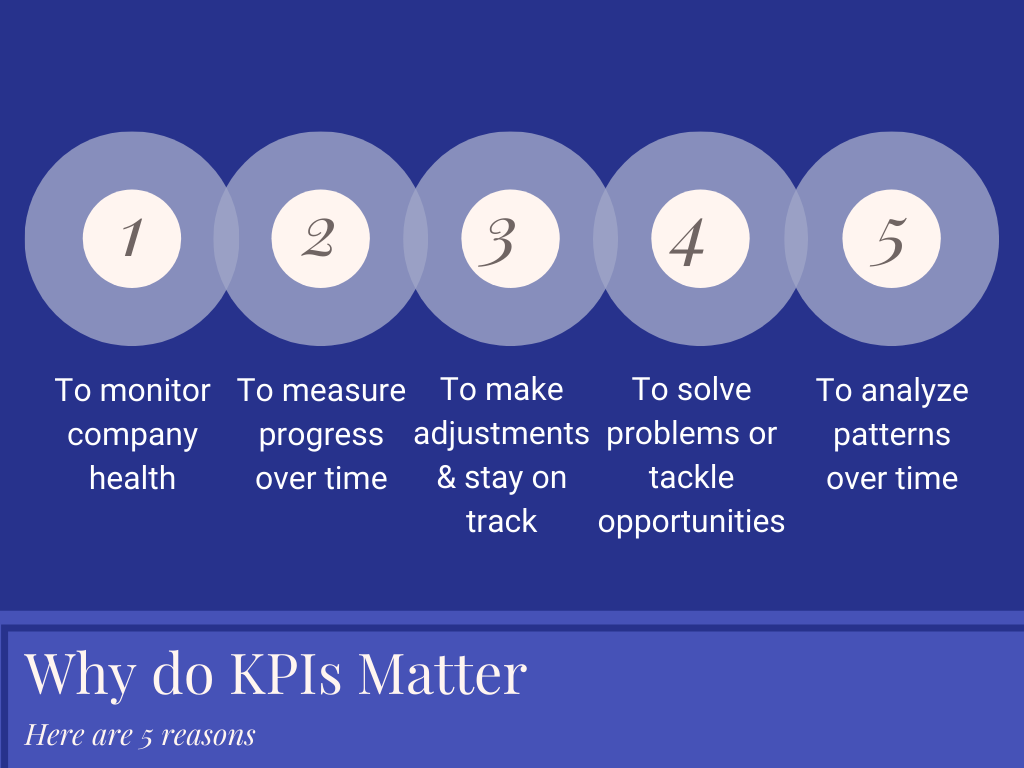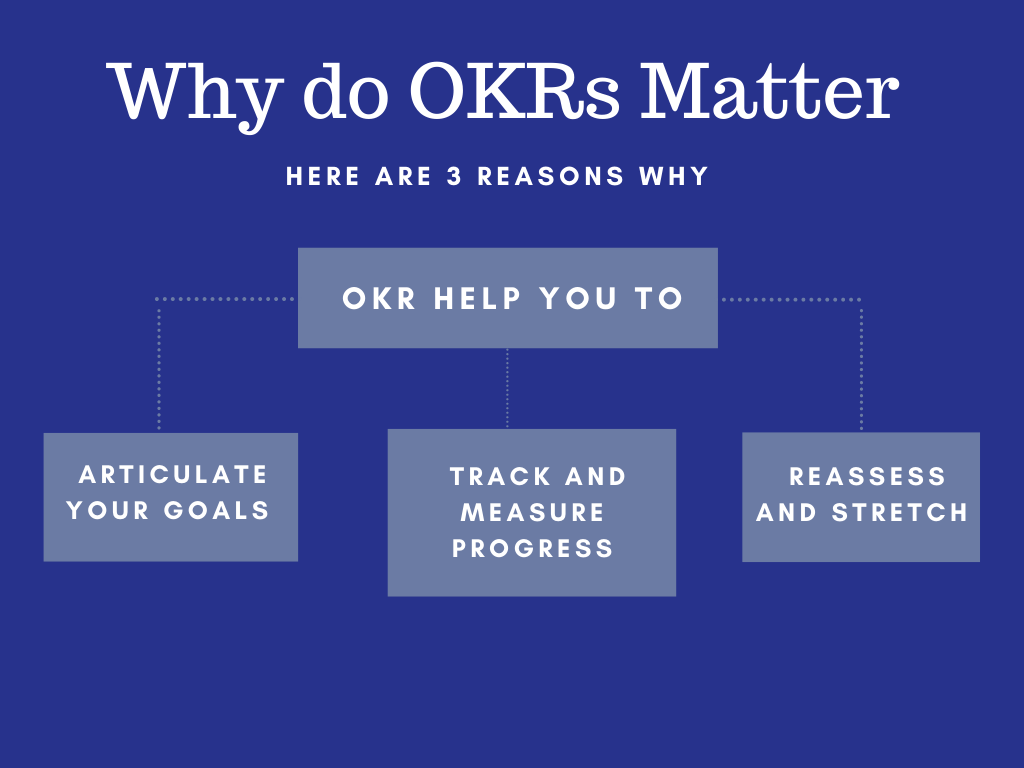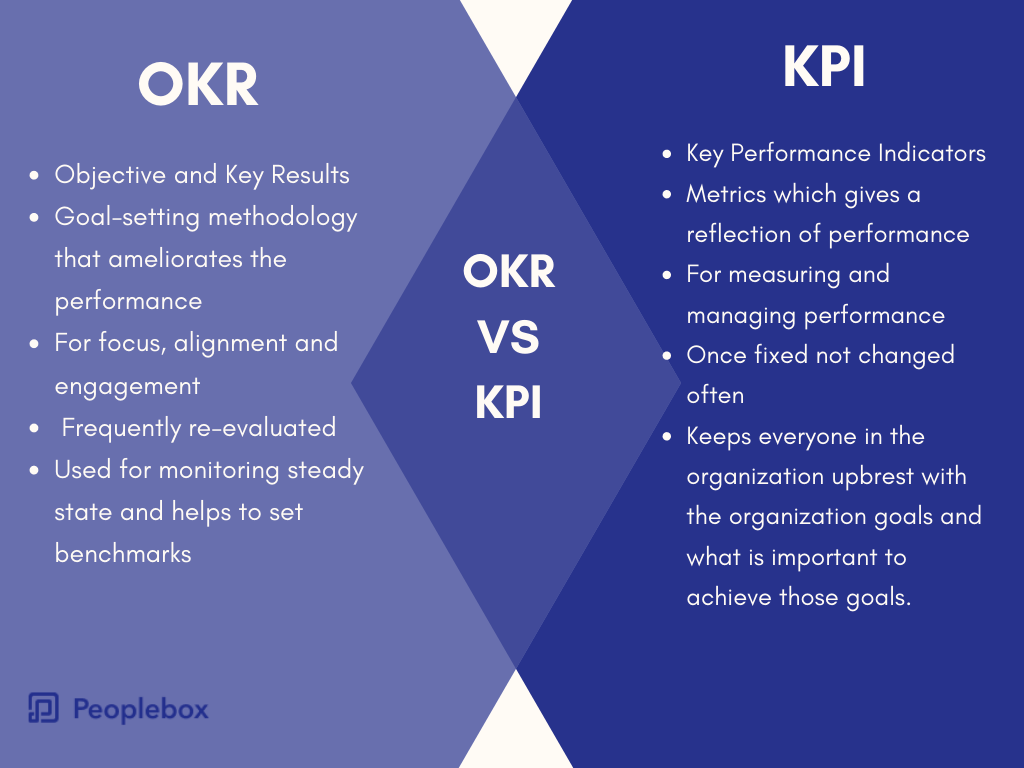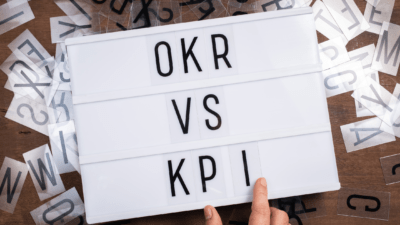OKR vs KPI. Are these two goal-setting techniques really different? Yes! OKRs and KPIs – are the foundation of the success of any organization.
But the terms are often confusing and many questions click in mind when we talk about these two terms.
What’s the difference between OKRs and KPIs? Do they work together? If yes, how do they work together and, last but not the least, how to track them alongside each other?
In this blog, you will learn why KPIs and OKRs matter, how certain organizations have benefitted from OKR and KPI and we will finally establish the role that both these goals play within an organization.
What is OKR?
OKR, or Objectives and Key Results, is a popular goal-setting framework used by businesses and teams to align their efforts, track progress, and ensure everyone is focused on achieving common goals.
The goals are set in a way that they can be measured and tracked, which makes it easy to determine whether or not your team is on track to achieve them.
Typically, OKRs highlight specific aspects that need enhancement (these are your Objectives) in order to achieve targets related to Key Performance Indicators (KPIs).
Progress is measured using Key Results, which help you monitor the effectiveness of the changes your team or company has implemented.
OKRs can be applied to various facets of your business from boosting engagement with your offerings to sharply increasing your revenue.
When it comes to OKRs, Peoplebox offers a smart and intuitive OKR platform that streamlines the entire process. You can experience it yourself below.
Check more: The Ultimate OKR Cheat Sheet: How to Write, Align, Check, and Score Your OKRs
What is KPI?
KPI, which stands for Key Performance Indicator, is a quantifiable metric that helps businesses and organizations measure their progress and success in achieving specific objectives.
KPIs are essential for tracking performance, making data-driven decisions, and ensuring that teams are aligned toward common goals.
In a nutshell, KPIs act as a compass that guides your business toward its targets. They can be applied to various aspects of your organization, such as sales, marketing, customer service, or operations.
Monitoring and analyzing KPIs regularly can help you identify areas that need improvement—and make necessary adjustments.
Why do KPIs matter?

Measuring the right Key Performance Indicators (KPIs) is vital for the success of your business.
However, questions like “Why do we need KPIs?” or “Why should we use KPIs?” or “How important it is to set KPIs” are often heard.
Some leaders even think that their way of doing things isn’t broken so why do they need KPIs.
KPIs are important metrics that ensure that you achieve your business objective.
Why do OKRs matter?
Ideas are easy but the execution is difficult. OKRs help you transform your ideas into great execution.
They help enhance employee engagement and motivate teams to perform better.
Click Here to read about different goal setting techniques

OKR vs KPI: How are they different
Both OKR and KPI are tools that help management to set goals that can measure growth, but they are different in a few ways.
In OKRs the process to achieve goals is also taken into account while in. OKRs act as the bridge between ambition and reality.
Read more: Should you use OKRs for process improvement?
They help you break out your boundaries and explore new areas. If you have an inspiring Ultimate Goal — for your company, OKRs can take you there.
A KPI, on the other hand, focuses mostly on the outcome. It measures the success, output, quantity, or quality of an ongoing process or activity. It measures processes or activities that are already in place.
OKRs are the ultimate goal company is planning to achieve, whereas KPIs are often project-related and aim to scale or improve the project.
OKRs are like GPS that guides you to your destination. They are temporary in nature and change from time to time. Once you achieve one landmark you will set the next objective.
KPIs on the other hand are specific and don’t change from time to time.

for Example “increase inbound sales by 20%” or “improve bounce rate of the blog by 20%.”
An OKR is more general, only going into specifics with the KRs, for example:
Objective: Give users a great customer support experience
KR: Bring down the time taken between CS responses by X%
KR: Increase 5-star reviews on google to X
OKRs are better if you want to improve the overall direction of your startup, but if you need to improve the performance of your team, product or plan you will have to set your KPIs right.
OKR Software - Rated 4.8 on G2
Empower your managers to be a better leader with essential performance tools & personalized coaching support.
If yours is a results-driven organization you require both KPIs and OKRs. Because, If you were only monitoring KPIs, you will have no clue how you are progressing towards your destination.
Do I need OKRs or KPI?
The secret is for the success of any business it is not OKR VS KPI because you need both!
For achieving more ambitious results you should be able to set realistic targets.
Your teams should be accountable towards the target, and there should be inspiration and motivation to work towards the goal.
Examples of KPI and OKR
Now you know the difference between KPIs and OKRs. Now let’s put them into practice by looking at some examples of KPIs and OKRs.
1. KPI examples
Let’s start with some examples of KPIs (Key Performance Indicators) in different areas of a business:
- Sales
- Monthly sales revenue
- Average deal size
- Conversion rate from lead to customer
- Marketing
- Website traffic
- Social media engagement
- Number of marketing-qualified leads
- Customer Service
- First response time
- Customer satisfaction score
- Resolution rate
2. OKR examples
Now, let’s look at some examples of OKRs (Objectives and Key Results) for a hypothetical company:
Objective 1: Improve customer satisfaction
- Key Result 1: Increase customer satisfaction score from 80 to 90
- Key Result 2: Decrease average first response time from 4 hours to 1 hour
- Key Result 3: Train customer service team on advanced problem-solving techniques by the end of Q2
Objective 2: Increase marketing reach and engagement
- Key Result 1: Grow website traffic by 25% in Q2
- Key Result 2: Boost social media engagement by 30% over the next 3 months
- Key Result 3: Develop and launch a new content marketing campaign by the end of Q2
Explore more examples of OKRs
- OKR Examples for HRs
- OKR Examples for Customer Success Teams
- OKR Examples for Finance Teams
- OKR Examples for Chief of Staff
- OKR Examples for Engineering Teams
- OKR Examples for Product Team
OKR VS KPI: Do they work together?

OKRs and KPIs are natural companions and complement each other. Both of them mostly help organizations to realize their strategy.
Using OKRs often also helps in improving KPIs. Let us look into the example below to understand the concept better.
Let’s say that critical business as usual for your Sales team is to bring in more business. You create a KPI that measures the conversion rate as X% every week.
As long as X% business is coming every week you know everything is going well. But if the X% target is not met it indicates the average sales going down. You can create an Objective to improve the conversion rate.
In order to create clear Key Results for this Objective, you’ll need to dig in for exactly what caused the conversion rate to go down.
Can OKRs and KPIs be tracked alongside each other?
OKRs and KPIs perfectly go hand in hand. KPIs help track performance and identify problems and areas for improvement; OKRs help in problem-solving and improving the processes to drive innovation and results.
Tracking OKRs and KPIs alongside will provide you with a bigger picture of the strategy you curated to achieve your goals.
Bridge to Success through OKRs and KPIs with Peoplebox
Smart organizations are highly focused on achieving tangible results. And some of those who achieve that, like Google, use OKRs and KPIs to strike a balance between setting ambitious goals and measuring performance towards those goals.
OKRs and KPIs ensure that every action is aligned with concrete outcomes, elevating their performance to new heights.
OKRs and KPIs act as guiding lights, not only setting targets but also monitoring progress in real time. They provide the roadmap that keeps organizations on course, making sure efforts match strategic goals.
To take your organization to this advanced level, tools like Peoplebox are invaluable. Offering a range of features, including OKR and strategy execution platforms, Peoplebox makes integrating OKRs and KPIs seamless. This not only enhances goal tracking but also fosters a culture of accountability and success.
Mastering the art of KPIs and OKRs with platforms like Peoplebox could be the key to staying ahead of the curve.to learn more, you can request a free demo with us!
FAQs
Q: What are OKRs and KPIs, and how do they differ?
OKRs (Objectives and Key Results) are goal-setting frameworks that outline specific objectives and the measurable results that indicate their achievement. KPIs (Key Performance Indicators), on the other hand, are specific metrics used to measure the performance of a particular aspect of a business. While OKRs focus on setting ambitious objectives and outcomes, KPIs concentrate on tracking ongoing performance.
Q: Can you provide an example of OKR and KPI?
Sure, consider an e-commerce company. An OKR could be “Increase customer retention by 20% within the next quarter.” The KPIs associated with this OKR might include “Customer Churn Rate,” “Repeat Purchase Rate,” and “Net Promoter Score,” all of which quantify the success of the objective.
Q: Why are both OKRs and KPIs critical for businesses?
OKRs provide a strategic direction, guiding teams towards ambitious goals that align with the organization’s vision. KPIs, on the other hand, offer real-time insights into operational performance, helping businesses identify areas of success or areas needing improvement. Together, they ensure a balanced approach that drives growth and operational efficiency.
Q: Can OKRs and KPIs be used together?
Absolutely. OKRs and KPIs complement each other. OKRs set the direction and inspire innovation, while KPIs provide the quantitative data needed to track progress and make informed decisions. By using them together, organizations can ensure they’re not only striving for growth but also maintaining operational excellence.
Q: Which one should businesses prioritize – KPIs or OKRs?
Neither should be prioritized over the other; they serve different purposes. OKRs are vital for defining ambitious goals and driving innovation. KPIs are essential for monitoring ongoing performance and operational effectiveness. A balanced approach that integrates both is key for overall success.





